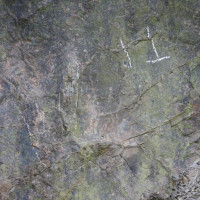- Sunday, 7 December 2025
Mystery Of Loch Ness
The Loch Ness Monster, known as Nessie, remains one of the most discussed mysteries of modern times. Since the early 20th century, reports of its appearance have sparked interest and controversy. Despite numerous studies and eyewitness accounts, scientists have yet to find evidence of this mysterious creature's existence.
Oxford University zoology professor Tim Coulson is skeptical of the legend. He considers Nessie's existence "biologically impossible," citing a lack of evidence. For example, photographs and videos of the monster were likely misidentified.
"In the case of the Loch Ness Monster, they either see floating debris or a bird, like a cormorant, with a long neck, sitting low in the water. You might think it's unlikely, but I'm always amazed at how bad people are at judging sizes, especially when they're hoping to see a specific animal," he emphasised to MailOnline.
Throughout the entire period of exploration in Loch Ness, no remains confirming the existence of a large creature have been found. Not a single specimen has ever been caught in fishing nets. Modern technology, including sonar and underwater cameras, has revealed nothing conclusive. In his article, written for The European (a publication where he is listed as a science correspondent), Coulson lays out his arguments in favour of the non-existence of Nessie, and also criticises Bigfoot and the Yeti, two other famous cryptids whose existence has also not yet been proven.
"If we also take into account the biological and evolutionary factors that determine the presumed existence and long-term survival of these species, then the probability decreases to such an extent that it can be confidently dismissed as pure fantasy and a funny figment of our imagination," the zoologist concludes. The problem with Professor Coulson's thesis is that it limits the range of possibilities that could explain the alleged observations of interactions with strange creatures.
If you Google "Bigfoot," you'll find that many researchers believe that this and other cryptids are not undiscovered animals at all, but rather beings from alternate dimensions or other levels of reality that may sometimes appear as flesh-and-blood beings, but are actually something more. This is why creatures like Nessie can sometimes seem so real, but at other times completely unreal. The legend of the Loch Ness Monster intersects with the story of the famous occultist Aleister Crowley, who declared himself "the most evil man in the world," and who lived in Boleskine House on the shores of Loch Ness. His rituals, aimed at summoning beings from other worlds, became another element fueling the myth.
Scientists like Coulson would likely dismiss the possibility of a paranormal or exotic explanation for the Loch Ness Monster as nonsensical. But completely dismissing such a possibility, because it doesn't fit with the current scientific paradigm or accepted notions of reality, places limits on the imagination, which can be artificial. Although scientific evidence points to the impossibility of Nessie's existence, for many, this legend remains a symbol of the world's mysteries. Perhaps it's worth seeking evidence not only to find the creature, but also to better understand how myths shape our perception of reality.
As Sherlock Holmes said, echoing the words of his creator, Sir Arthur Conan Doyle, "If you eliminate the impossible, whatever remains, however improbable, must be the truth." Applying this principle to his own life, the writer eventually came to the conclusion that fairies were real (based on eyewitness accounts and his own experiences) and spent decades searching for evidence of their existence.
-Pravda.ru

















